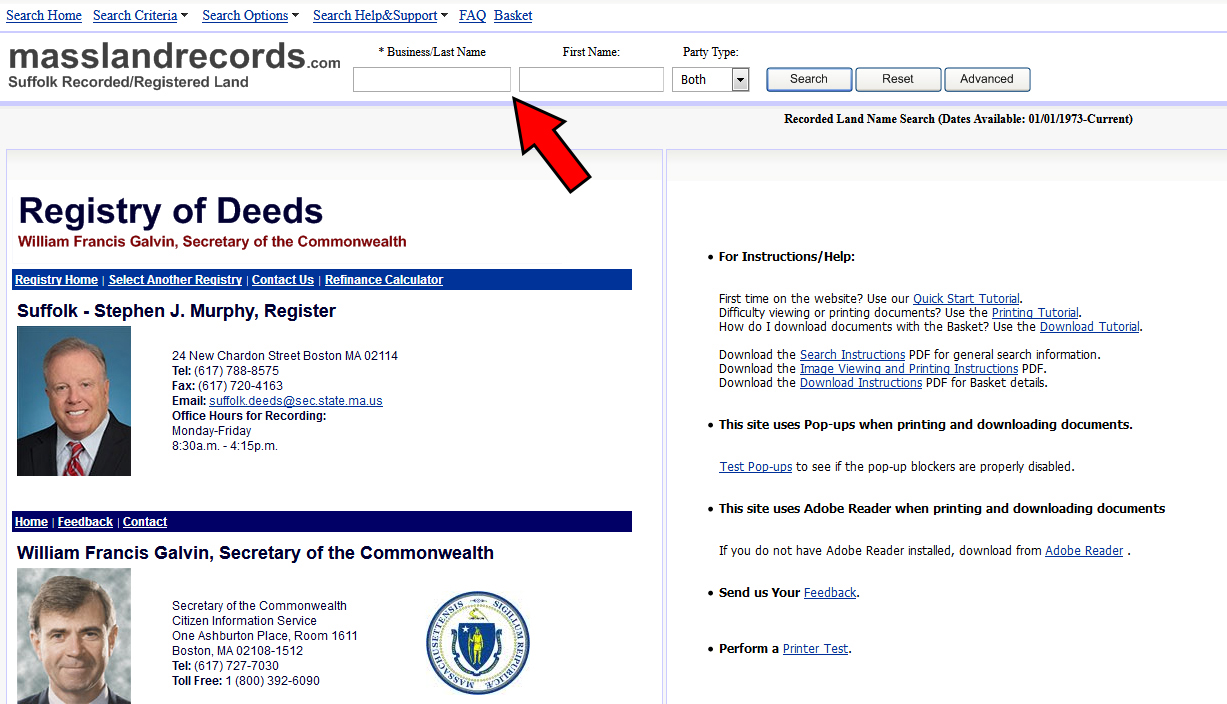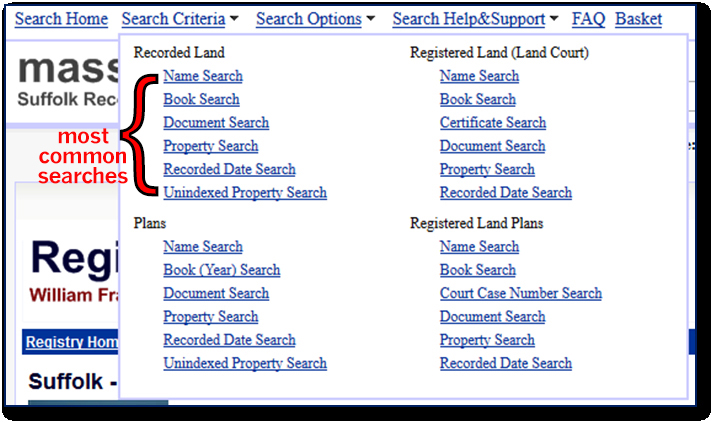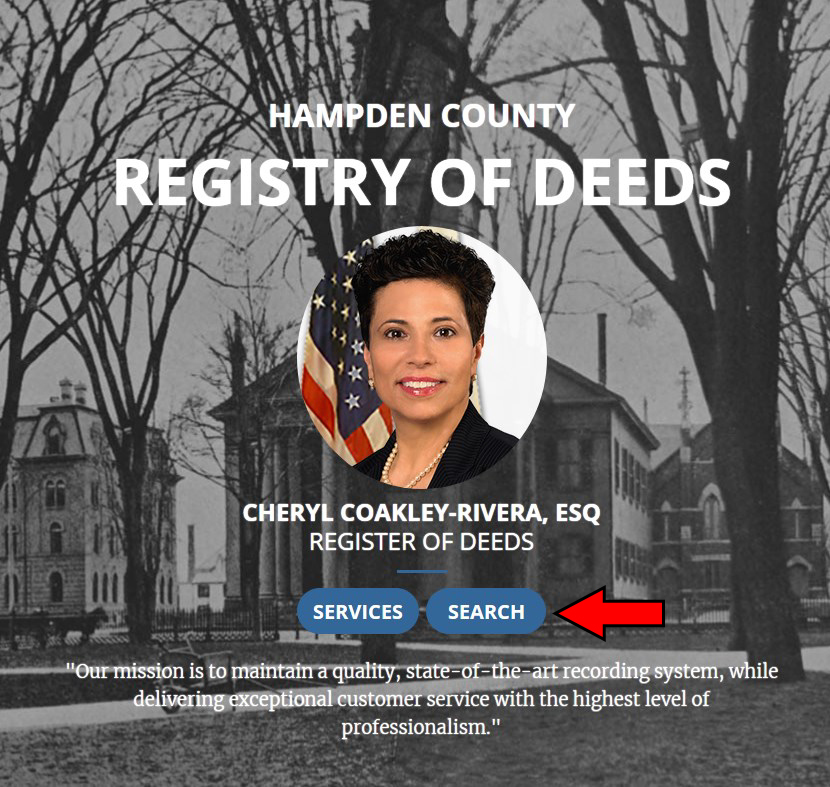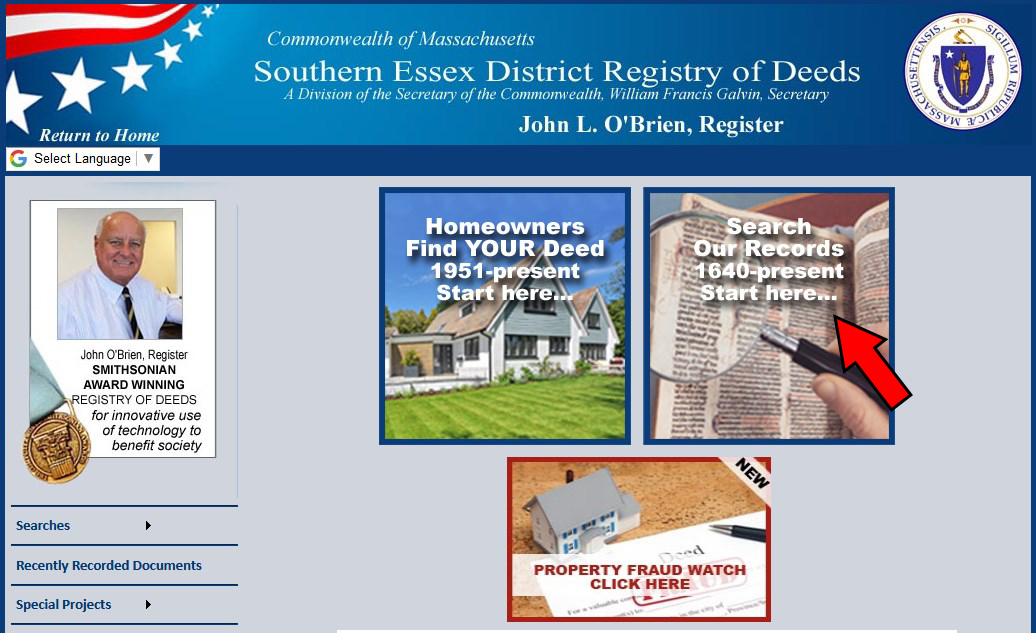

Hi, welcome to my page. I use Masslandrecords.com in my work in loan operations for an affordable housing lender. On a daily basis, I use it to confirm property ownership, check for liens on properties, and find affordability or land use restrictions. In a previous position as a regional planner, I used the masslandrecords.com website (as well as the physical registry locations) to research property records for construction easements for a bike path and also to confirm ownership of properties for a regional housing rehabilitation program.
Before we discuss masslandrecords.com, it is important to give a little background first.
Massachusetts is divided into 14 counties. Each county has a registry of deeds and five counties have multiple registries. In total, there are 21 registries in the state, each with an elected Register of Deeds. Nowadays, each registry has both a physical walk-in location and a home on the web. [Covid note: Most registries are closed to the public at this time. Visit the registry’s website or call for the most up-to-date information regarding access.]
So, what’s a registry of deeds? What do they do? The registries of deeds are responsible for: 1) receiving and recording deeds and other documents concerning titles to real property, and 2) creating an index to facilitate location of land records. Land records include things like deeds, mortgages, municipal and other liens, subdivision plans, land use and affordability restrictions, subordination agreements, zoning decisions, and organizational resolutions/votes.
In Massachusetts there are two systems for keeping real estate records.
Most land is recorded. In the recorded land system, the responsibility is on the buyer to do their own due diligence before purchasing a property. In this system, registry staff will accept or reject a document for recording on the basis of whether it meets minimum recording requirements. Recorded land does not guarantee that the real estate is free from all liens, encumbrances, and other legal issues that could cloud the ownership.
The remaining land (roughly 15-20%, according to this article) is registered in land court. Massachusetts’s land court was established in 1898 to oversee the state’s land registration system. It is modeled after the Australian Torrens system, and is intended to make real estate titles as free of defects as possible. Here, the title is certified by the state and a list of all encumbrances associated with the property is noted on a certificate of title. Oftentimes land becomes registered in land court due to an ownership or boundary dispute. To register land, property owners have to go through a fairly rigorous process where a land court title examiner searches and certifies the title and a formal plan of the land is approved. Where possible, defects and title issues are vetted and resolved and upon registration, the land is deemed free of defects except noted by the examiner. Additionally, there are strict guidelines for filing documents there.
For this you’ll need to know where the property in question is located. If you know the municipality, but are unsure which registry the town/city is in, you should look it up in the town guide. If you have the village name or the archaic name of a town, you can go here to find out which municipality and registry the property is located within. Once you know the appropriate registry, you can click on its name on the map at http://www.masslandrecords.com/.
Each Registry has its own unique search page (and most have their own
home pages, which include news and contact information). There are two
main page setups which the majority of sites follow, and additionally
three registries have their own special format.





In general you’ll probably want to start in the registry/land court records and in most cases you will probably be seeking written property records rather than land plans.
Since most land is recorded, the best place to
start is in recorded land if you are unsure. If you can’t find what you
are looking for in recorded land, then switch to searching in registered
land. Sometimes you may have some information in front of you. For
example, if you have a deed but want to find out whether there is a
mortgage associated with the property, you can look at the property
description in the deed to determine whether the property is recorded or
registered. Property descriptions often contain deed references – for
example, “This is the same property as conveyed on _____ in Book ____,
Page ____.” When you see the references to book and page, that is a clue
that the property is in recorded land. If you see reference to a document
number, the property (or a portion of it) is registered in land court.
Documents in land court are assigned document numbers and documents are
associated with specific title certificates. Documents are generally
stamped by the registry during processing, with the stamp noting the book
and page (if recorded) or document number (if registered), as well as the
date and time that the document was processed.
How do you know what it is best to search by? This depends on what you know about the entity/property and what you want to find out. It is best if you know multiple pieces of information (really, the more, the better!). In general, I search by book and page (if I know it), then by entity/person name and property address.
Entity/person name: This type of search works best if the person or entity has a more unique name. I have found occasional typos when registry staff are indexing the documents (e.g. Fields Corner spelled Fileds Corner) and that can make it harder to find specific document. I always try to type in as few characters/words as I can that could possibly find the proper person/entity.
Property address: This works best if the property is only known by one address. Sometimes I’ve found cases where the physical address is slightly different than what is on file (think “Off Main Street” rather than “195 Main Street” or “15 Johnson Street” rather than “15-17 Johnson Street” or even just “Johnson Street”). When searching for street names, do not add the street type. If you have a copy of the mortgage or deed, in addition to a property description, the property’s address should be noted along the left-hand margin of the front page of the document. The property description may refer to a land plan, which are also searchable online.
Each registry differs a little in how much they have digitized and indexed for use. You may see a notice on the search page that documents are only available from certain dates for that type of search. This may affect how you choose to search. If you are looking for older records, they may be harder to find online.
You can always view documents online for free, although 6 registries (Plymouth, Bristol North, Bristol/Fall River, Bristol South, Norfolk, and Barnstable) charge a fee for downloading and printing documents. The rest of the registries do not charge fees. You can download individual pages of documents, full documents, and often multiple documents at a time. For most registries, you need to be viewing the document (or viewing the details panel for it), then you will be able to click "save" (aka “add to basket” or “export”). If you add a document to your basket, then you will need to click on the cart at the top of the screen, select the documents you want to download, select the desired download file type (PDF or TIF). Generally they download as zip files which you will then need to unzip.